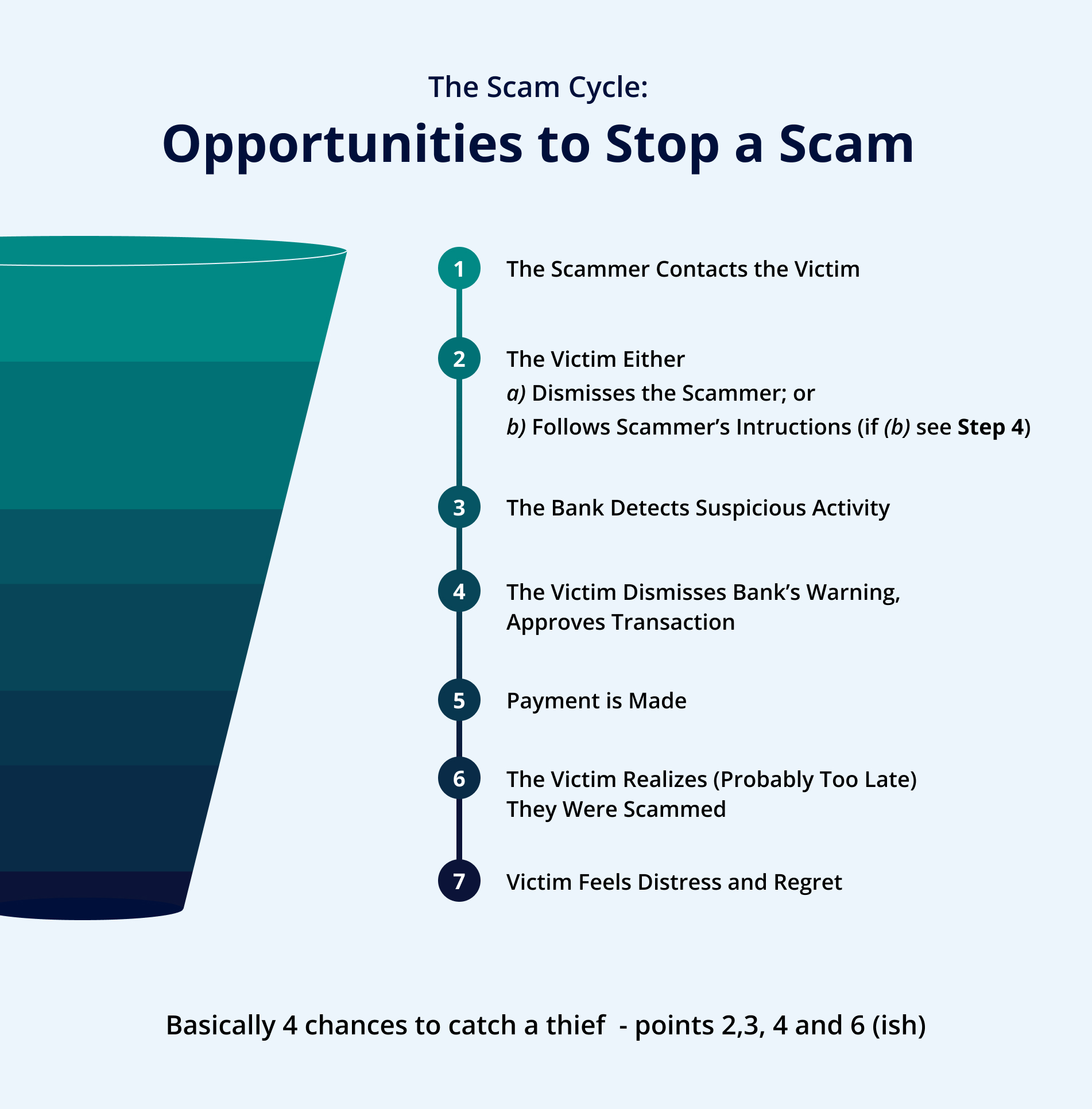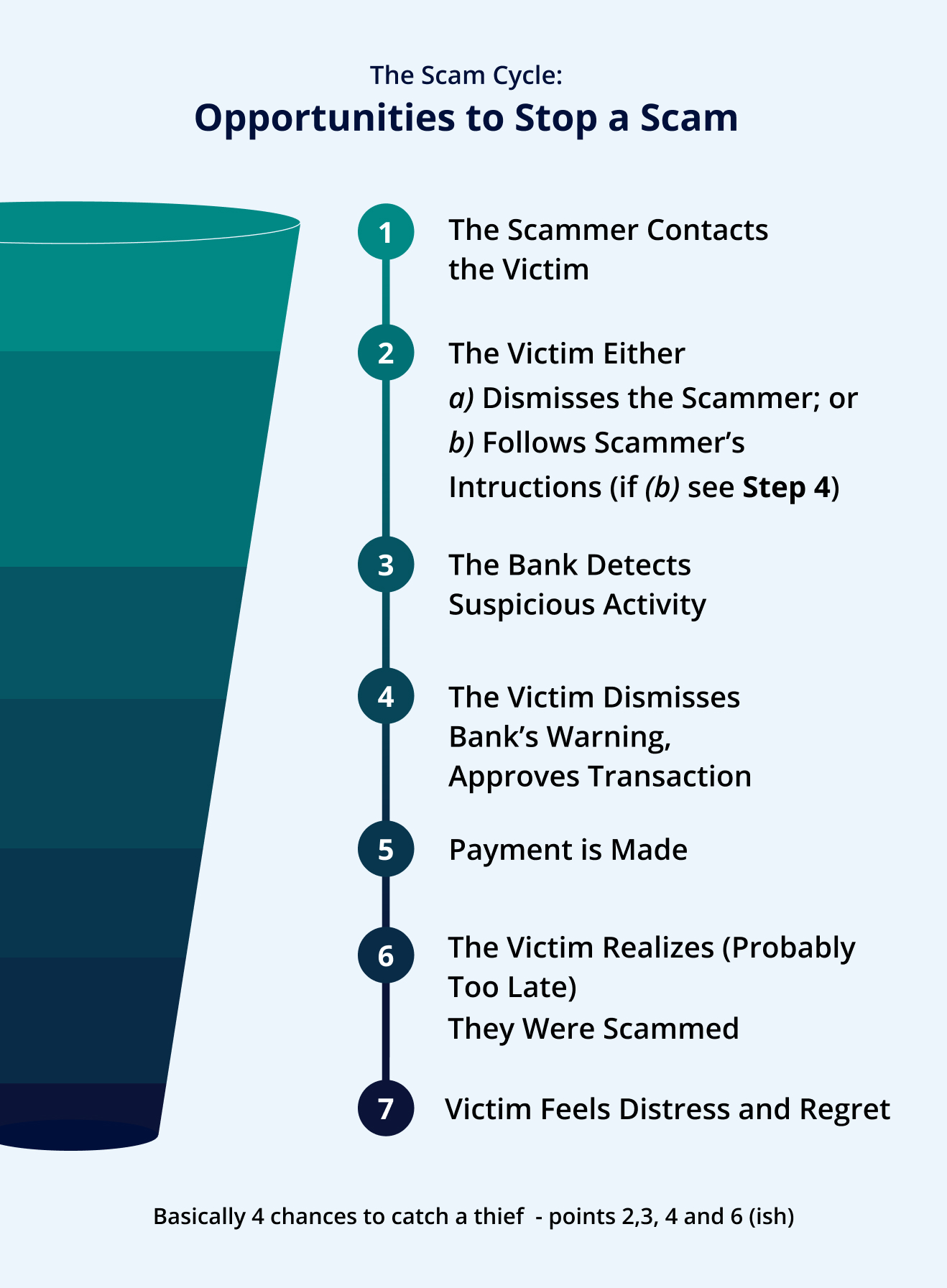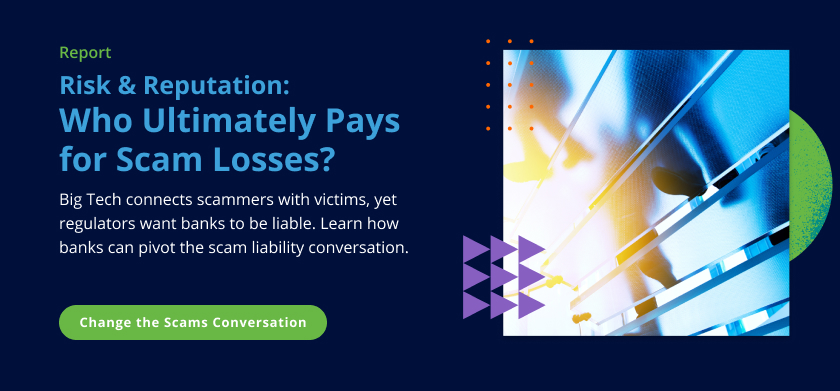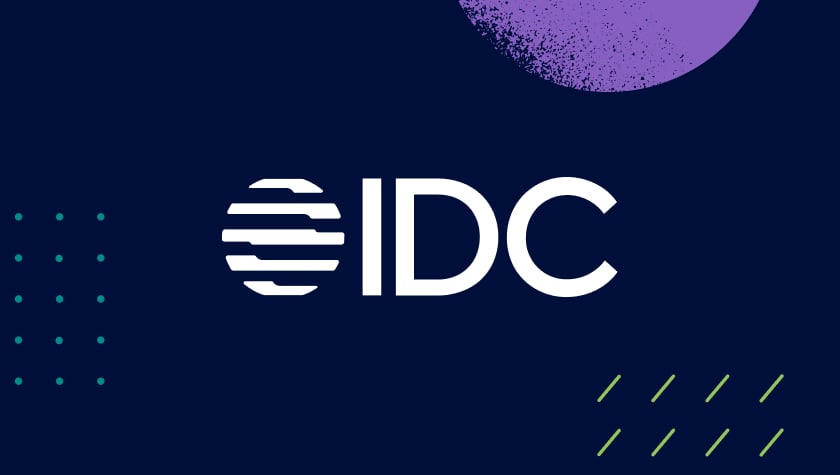
Instant payments can quickly cause a flood of instant scams, especially in a world where funds move with a few taps on a smartphone. Feedzai Scam Prevention protects customers from the growing scams threat by enabling banks to detect unusual activities earlier and know their customers at a granular level.
How Instant Payments Contribute to Instant Scams
Scams are surging for several reasons. First, banks have become much better at stopping unauthorized transfers. This pushed fraudsters to target customers themselves instead with authorized push payment scams.
Fraudsters can profit in seconds thanks to advancements in payments technology and the expansion of real-time payment schemes. If customers aren’t careful, the instant payments they intend for legitimate reasons become instant scams.
The worst part of this global epidemic is that customers are often forced to bear the losses. One of the key reasons scams are exploding is because bad actors are successfully using big tech platforms to connect to victims. This includes phishing, smishing, and vishing scams as well as scams originating on social media services, which the United States Federal Trade Commission recently described as a “gold mine for scammers.”


As a result, the costs of scam losses have surged in recent years. In the US, the Federal Bureau of Investigation (FBI) reports that American consumers lost $10.3 billion to scams. The majority of these losses stemmed from phishing scams, which received over 800,000 complaints in the past year.
Similar patterns can be seen around the world. In the UK, consumers lost £249.1 million to authorized push payment scams in the first half of 2022. On the other side of the globe, authorities in Singapore reported a 32.6% rise in reported scams in 2022 when compared to the previous year. At the same time, the value of scam losses in Singapore leveled off.
3 Reasons Why Scams Are So Challenging to Detect
So why are scams rising? There are three key factors at play.
- Scams Are Underreported: The unfortunate truth about the statistics listed here is they are very likely to underrepresent the true scam picture. Many victims do not come forward and report scams for fear of being judged or stigmatized. As a result, banks may not realize the full scope or intricacies of the scams problem. If banks can’t accurately measure the problem, it’s much harder to solve.
- Scam Victim Narratives Are Unreliable: Adding to the scam reporting challenge is the fact that some victims do not provide reliable accounts. Some victims don’t believe their bank will reimburse them if they admit they approved a transaction. They may twist or change their story in the hopes of recovering their money. This means banks can’t always trust the stories scam victims provide.
- Banks Aren’t Incentivized to Address Scams: One of the key reasons banks have done such a great job at stopping unauthorized fraud is that they are on the hook for these losses. On the other hand, banks are less likely to be found liable for APP scams. Combined with many victims’ reluctance to report scams, banks may not be collecting the most accurate data. As such, there is little motivation to act on it. However, UK banks are now liable for reimbursing scam victims and it’s possible that other regions may adopt similar requirements.
The expansion of real-time payment schemes around the world is set to explode the scam epidemic. That’s why banks need a scam prevention solution that can respond to new patterns and block scam losses. But not all scam prevention systems are alike. The best-performing ones are built on four key pillars.
The 4 Pillars of Feedzai Scam Prevention
The components of a strong scam prevention solution include:
- Responsive Detection: Any scam prevention solution needs to include the ability to detect suspicious transactions or behaviors. Scams are notoriously difficult to detect because it is unusual for a single binary indicator to uncover scam activity. What’s more, traditional security measures can only detect tactics like account takeover fraud because the legitimate account holder does not approve the transaction.
- Customer Education: Because they are ultimately the ones who approve transactions, customers must be educated on how to spot scams and protect themselves. This means banks must share their insights on common scam types (e.g., investor, phishing, or romance scams) and help customers understand when they are being targeted by a bad actor.
- Knowledgeable Customer Staff: It’s just as important for bank staff to understand the wide range of scam tactics that customers will face. Staff must be trained to detect signs of a scam. This includes unusual payment activity, such as adding new payment recipients. It can even include changes in the way they handle their devices.
- Use the Right Data: Protecting customers from scams requires understanding who they are at a granular level. This means understanding how customers behave by carefully analyzing their unique and individual data. For example, a user who normally engages using their banking app but suddenly switches to a website or call center could be at risk of being scammed. Banks can understand who their customers are by building a unique digital fingerprint based on the user’s previous interactions.
Feedzai’s Scam Prevention solution combines these pillars to take a RiskOps approach to stop scams and protect customers.
How Feedzai Scam Prevention Stops Instant Payments from Becoming Instant Scams
Here’s how Feedzai’s Scam Prevention solution tackles the scam epidemic differently using a RiskOps strategy.
RiskOps Takes a Holistic View of Data
Many banks have a broad arrangement of point solutions for different use cases. This often leads to disparate data silos that struggle to communicate effectively across different channels. RiskOps, on the other hand, considers all data across multiple channels and sources. This connects all risk signals from multiple interactions that would otherwise slide under the radar. Feedzai’s unified approach to data enables banks to collect data faster and detect patterns earlier. With data-based insights, banks can quickly realize that a victim is being scammed and intervene.
Know Your Customers with Digital Trust
In the digital age, Digital Trust is key to knowing your bank customers at every interaction. Banks must know their customers from the moment they log into their accounts to the moment they log off. Establishing this trust relies heavily on behavioral biometric data that ensures your customers are who they claim to be at all times. This includes how customers handle their phones, their typing speed, or their typical mouse movements. At the same time, the solution also considers behavioral analytics, such as how their customers normally transact and if there are sudden changes in their activities. Combining all these insights gives banks a more thorough understanding of how their customers’ behaviors are changing and if they are at risk of being scammed.
Monitor Payment Recipients
Looking at customer behaviors and transactions is just one part of a bigger puzzle. Feedzai’s solution also looks at payment beneficiaries. These accounts, after all, are most likely to belong to bad actors behind the scams or money mule accounts they control. The model can detect if any payments have previously been made to the account or if a number of payments have been issued in a short period of time. These are all warning signs that a customer may be getting scammed.
Scams are growing more widespread and scammers are becoming more inventive. With liability shifting from customers to banks, now is the time to protect your organization and your customers from scam losses.
Share this article:
Robert Harris
Robert Harris is the Head of Product Marketing at Feedzai and a passionate proponent for fighting fraud and money laundering particularly in financial services. Robert is an accomplished leader in both small and large organizations in identifying opportunities, securing funding, and creatively delivering value in line with project goals. Whether launching new solutions or maximizing value from mature ones has a keen commercial eye and a conviction to both innovate and make prioritization decisions accordingly.
Related Posts
0 Comments6 Minutes
A Guide to Secure, Seamless User Authentication in Payments
Online payments demand a delicate balance between security and user experience. Consumers…
0 Comments7 Minutes
Combating Emerging Scams in the Philippines
The Philippines is witnessing remarkable growth in digital banking. Unfortunately, a…
0 Comments5 Minutes
Feedzai is a Leader in the 2024 IDC MarketScape for Enterprise Fraud Solutions
Exciting news! Feedzai, the world’s first RiskOps platform, is proud to have been named a…


